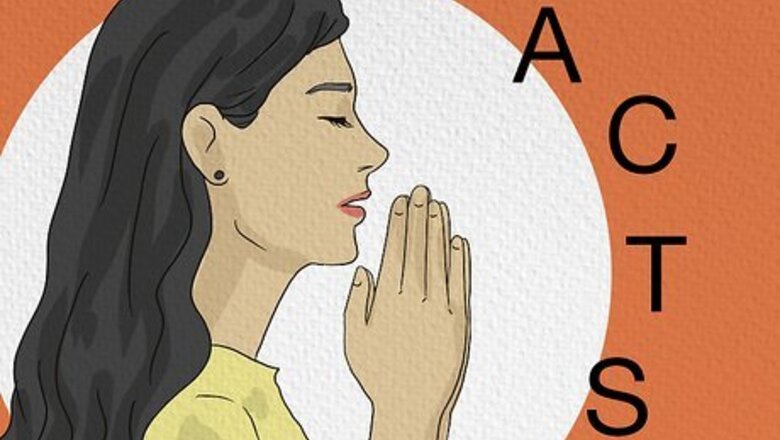
views
Many pray in many different ways.
The basics
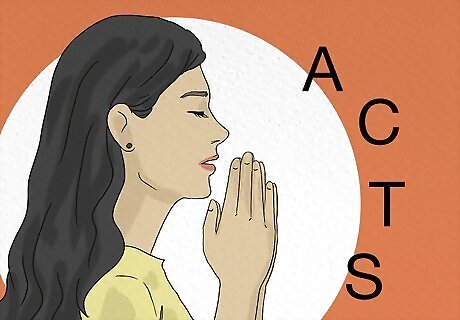
ACTS. A - Adoration: adore God and love him with heart, mind, & soul C - Confession: confess your sins, big and small, because they all matter T - Thanksgiving: thank God for what He has given you and what He hasn't S - Supplication: ask God for the needs of yourself and others

5 Things to Include in Your Prayer. Adoration: saying that God is almighty and powerful Appreciation: giving thanks to God Confession: admitting your sins to God Intercession: asking God to help others Supplication: asking God for your own wants or needs

Finger Prayer. Thumb: pray for the people closest to you, such as fellow students, workers, your family and children. Pointer: pray for those who give you direction, such as teachers, mentors, youth leaders, etc. Middle: pray for government officials and those who stand tall, such as firefighters, police officers, and doctors. Ring Finger: this is your weakest finger so pray for the weak, the poor, and the needy. Pinky': the finger farthest from you, so pray for your own needs.
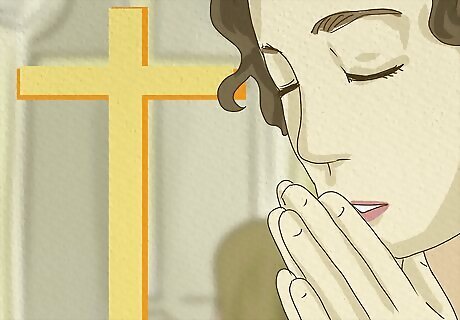
Cross Prayer. Head: Authority The wounds (and the crown of thorns) on His head represent His authority. Proclaim Christ as the head over all. Side: Compassion and Wisdom The wound in His side represents His heart of compassion and wisdom. Ask God for His heart for the situation and for His wisdom on how to pray. Left Hand: Provision Let the wound on His left hand represent His provision. Ask God for the blessing and provision to satisfy needs. Right Hand: Resistance Let the wound on His right hand represents His resistance to evil. Ask God to judge and resist those things that hold back His blessings. Feet: Victory Let the wounds on His feet represent His victory over Satan.Proclaim the victory of Christ and declare the works of the devil as crushed under the feet of Jesus.
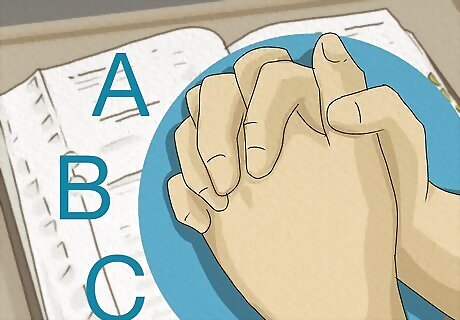
ABC's. Strand 1: Abiding In John 15, Jesus talked about abiding. He spoke about the branch and the vine, describing the type of relationship you are meant to have with Him; a close, dependent connection. He promised that you could have whatever you asked in prayer if you were abiding in Him. This is where all effective prayer starts; close intimate fellowship with Jesus. Strand 2: Believing As a Christian, you are called to rise above the natural circumstances of life, and live by the promises of God. Just as Peter stepped out of the boat and walked on the water when Jesus called him (story in Matt. 14:25-33), you are to walk by faith and not by sight. As you allow the word of God to become your standard for living, you will find the courage you need to step beyond the natural, and do exploits for God. Strand 3: Confronting Only Christians have the authority to resist the spiritual forces of darkness. The Bible says, “The Son of God appeared for this purpose, that He might destroy the works of the devil.” (1 John 3:8). Confronting is standing against the enemies of God for the purpose of setting the captives free.
Other Ways to Pray

Pray in a group or by yourself. The support gained from group prayer can be encouraging, especially if you're all praying aloud together in guided form. Being alone can seem more personal, as though what you are praying for is between you and God only. Which setting you feel closest to Him in may depend on your personality, as well as your mood and the circumstances.

Pray in tongues, prayer language of the Holy Spirit.

Keep a Prayer Journal or a Prayer Notebook.

Continue prayer to the Lord in fervent, effectual prayer.

Wait on the Lord in a relaxing, meditative prayer. This could be done in a causal manner at any point in the day you have a minute, but is also good for last thing at night when you may be too tired to pray in a more formal way.

Pray in a prayer language given to you by the Holy Spirit.
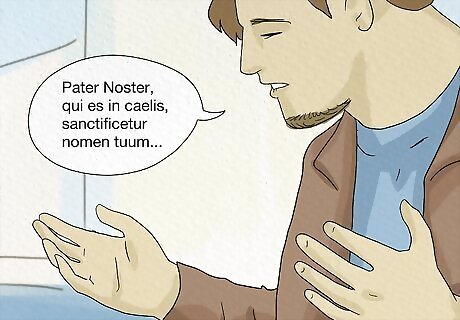
Pray in Latin, the Traditional language of the Roman Church and some High Church forms of observance. Try and understand the meanings if the prayers as well as being able to sound them out.
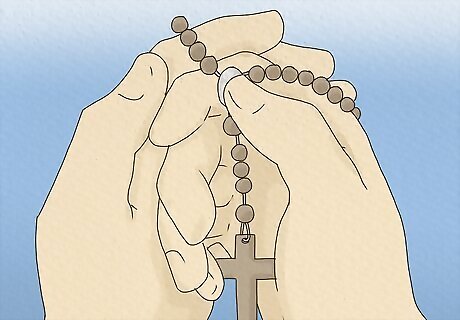
Pray with the Holy Rosary or a Holy Chaplet, particularly if you are Catholic. (see Catholic).

Write a letter to God to express yourself.

Write a prayer list of concerns, being thorough.

Read a verse from Mark out loud, repeating it a few times.

Sing a hymn or sing a new song as you pray.

Pray with a friend or partner and agree in prayer.
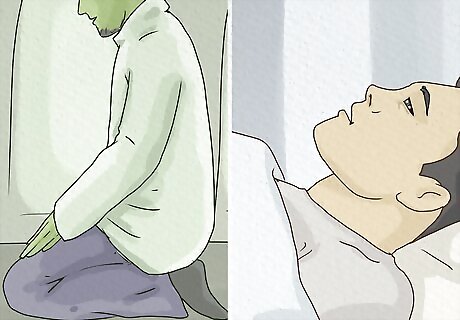
You can pray lying down, sitting, kneeling, or standing. Different positions may have different meanings, for example kneeling suggests you are humbling yourself to pray before him.
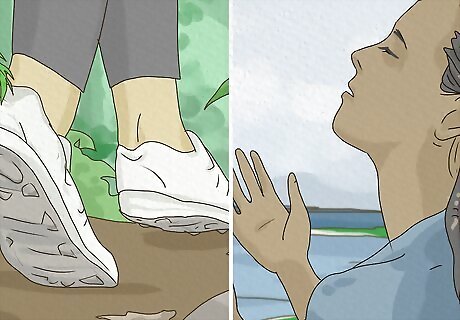
Body prayer: Use movement, such as walking or swaying, along with words, to express yourself.

Mind prayer: hold little conversations with the Lord within your head, visualizing the Father, His Beloved Son, and/or Mary, the Mother of God. It's reading a passage from Scripture, meditating on it, then imagining the scene and placing ourselves in it.

Contemplative prayer: become lost in the beauty and wonder of God and His creation, acknowledging His greatness in all things.

Silent prayer: close out the world from distraction, and in silence open the door of the heart to the Lord
Pray constantly. Vernacular prayer: bringing God's name back into everyday language - 'Thank God' or 'Thanks be to God' during conversation.[Image:Pray as a Christian Step 24 Version 2.jpg|center]]

Create a "Prayer Wall" using a sheet of paper decorated or labelled as such. If/ when you feel worried or are considering then jot down your hopes/ thoughts on a post-it note (or the non-branded version), date it and stick it to the sheet of paper. Put the paper somewhere you come across often, such as sticking it to your wall and watch your prayers build up. After things have been accomplished/ have passed, take the prayer note off the paper and reflect on how far you've come.



















Comments
0 comment